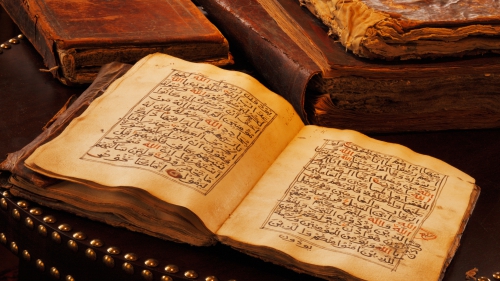The Qur'an and Sunnah as the Foundation of Islamic Architecture

Concerning the realm of architecture, the role of the Qur'an and the Prophet's Sunnah is to provide the Muslims with an inspired outlook on life, in general, and on those issues that are pertinent to architecture, in particular, and with some broad rules of morality and guidelines of proper conduct which may or may not be directly related to architecture. Upon such a divine outlook and general principles and guidelines Muslims are invited to establish architectural theories, systems and styles that are consistent with both their religious preferences and the requirements of their diverse eras, geographic regions, cultures and other practical needs. Islamic architecture is a symbiosis between constancy, which is represented by the constant innate inclinations of essential human nature and the heavenly guidelines and rules meant for it, and inconstancy, which is necessitated and controlled by the time and space factors. It is the latter that changes while the former is abiding and remains firm.
Indeed, this is the thrust of Islamic architecture's powerful identity. Due to it, Islamic architecture was able to rise above the precincts of the geographic and cultural contexts in which it was planted. Due to it, furthermore, Islamic architecture was able to transcend the restrictions of the historical moments during which it was fashioned outliving the generations of its engineers, craftsmen and users. Islamic architecture with the ideals that it personifies dominates its people and their thinking patterns. It is never the case that the people subjugate to their wishes and then control the world of Islamic architecture. When that happens, that spells out a drastic degeneration of Islamic architecture which can lead to its end.
Islamic architecture likewise enlightens and inspires. Some of its facets can be inspired by a fine and purified vision, philosophy and thought approved by the Islamic consciousness which are then fully Islamized and made subservient to the same Islamic consciousness. However, there is no segment of Islamic architecture which can be inspired by such ideas and attitudes as stem from the sources that are contradictory to the source from which Islamic architecture originates, that is, revelation in the forms of the Qur'an and Sunnah of Prophet Muhammad (pbuh). Such would be a blasphemous act and an act of gross injustice towards the Muslim users of the concerned segments of architecture.
Islamic architecture declined struggling to retain its conspicuous identity only when its two defining aspects were traded, that is, when the sacred in Islamic architecture became compromised and was regarded as a transient and man-generated legacy, and when either a building system or a style of an age or a geographic region became excessively venerated and was regarded as a sole inspiration and guidance, or when a complete detachment from the religion of Islam and its civilization occurred and an inspiration and guidance were sought from foreign sources. It follows that successfully reviving the real meaning and vigor of Islamic architecture depends on properly conceptualizing its basic notions and its ideological framework, which then must be followed by finding and actualizing appropriate strategies and methods for it.
The roles of the Qur'an and the Porphet's Sunnah in shaping the identity of Islamic architecture are as follows:
1. The Qur'an and Sunnah afford a perfect guidance on how Muslims are to perceive creating, using and possessing architecture. Such is an integral part of the total Islamic worldview. The two holy sources also educate on the importance of architecture and its purpose in life. The goals of architecture are seen as closely linked to man's life purpose and goals, and are treated as such. The two in fact complement each other. Thus, a Muslim architect should see himself firstly as a servant of God, then as an architect. A Muslim architect should see his profession as no more than a means towards realizing his noble terrestrial mission as a vicegerent and servant of his Creator and Master. In general, the purpose and goals of every Muslim's professional life, it goes without saying, cannot deviate from the purpose and goals of his total existence.
2. The Qur'an and Sunnah afford sets of broad and general values and principles which are central to the body of Islamic architecture: from the ideological and abstract aspects concerning the philosophy of Islamic architecture, to the practical and tangible ones concerning the functions of many of its components. If one expects to find in either the Qur'an or Sunnah a concrete formula for designing a dwelling or a mosque, for example, one is then seriously misguided. Equally misguided is he who asserts that the art and architecture of Muslims has nothing to do with the beliefs and value system of Islam, and that the two should be kept clear of each other.
3. The Qur'an and Sunnah with their approach to architecture serve as an everlasting source of inspiration and a catalyst for matchless ingenuity. And the two notions: inspiration and ingenuity, are fundamental to every successful architectural story. For instance, the Qur'an and Sunnah do not speak about how to design a house entrances and windows, but they speak about the issues which are pertinent to the subject of the house entrances and windows. Nor do they speak how to organize inner spaces inside a house, but they speak about scores of issues which are related to that particular subject. Nor do they speak about the ways mosques are to be designed, but they speak about mosque activities and various other matters that are pertinent to the mosque and so must be considered when designing mosques. Nor do they speak about how to make buildings environment friendly, but they are very much eloquent about the meaning and significance of the environment and our many duties towards, and rights over, it. Nor do they speak about how to make buildings perfectly safe, secure and clean, but they are categorical in establishing safety, security and cleanliness among the most important principles in Islam.
These are only some examples where the contents of the Qur'an and Sunnah can function as the sources of inspiration and the catalysts for creativity. This however is to be seen as just a starting point from where a Muslim architect sets off to express himself architecturally and create such architectural forms that he deems most suitable insofar as his spiritual inclinations and life interests are concerned, using the same divine guidance as a point of reference for authorization whenever an architectural accomplishment is made. This divine arrangement renders the idea of Islamic architecture ever alive and applicable. It also signifies God's acknowledgment of the talent and potential inherent in man, God's vicegerent on earth, which, after all, are God-given.
4. The Qur'an and Sunnah, apart from being a divine guidance, also serve as a powerful restraining force every time people develop a tendency to lose their way and start using architecture as both a means of and field for committing certain evil practices. Since architecture is a powerful and effective medium for expressing ideas, status, reputation, personal and social achievements, etc., it has a potential to be both abused and misused at the hands of its designers, patrons, builders and users, proportionately to the extent of their deviational tendencies. Hence, in Islam such wrongdoings as squandering and extravagance, showing off, arrogance, ungratefulness, greed, jealousy, corruption, environmental destruction, discriminating against people and immoral competition, all of which can easily find a breeding ground in an erroneous architectural vision and style, are regarded as grave sins punishable by severe punishments on the Day of Judgment.
5. The Qur'an and Sunnah speak of many examples of some past nations' experiences in relation to quite a few aspects of architecture, thus furnishing us with many invaluable lessons. Those examples cover virtually the total human history from the first man and prophet on earth, Adam, to the events related to the prophetic mission of the second last prophet, 'Isa (Jesus). The examples of past nations' experiences at times focus on believers and at other times on the wicked. The two threads are interwoven into what is called the historical aspect of the Qur'anic mu'jizah, the miracle or sensation.
6. Sunnah and to a much lesser extent the Qur'an shed light on how the Islamic broad vision of architecture, and the notion of development in general, was translated into reality when Prophet Muhammad (pbuh) and the first generation of Muslims developed the city of Madinah, the prototype Islamic city, from an oasis with a few loosely interrelated settlements to a cohesive and dynamic city. Undoubtedly, this is the most comprehensive and at the same time emphatic dimension of Sunnah and somewhat the Qur'an in their capacity as the foundation of Islamic architecture. In it, one can find something on virtually every aspect of the true character of Islamic architecture, either explicitly or implicitly. This was the case because notwithstanding its simplicity, the physical form of the city of Madinah presented to the Prophet (pbuh) and the first Muslims the first physical locus of the first actualization of the Islamic message. The experiences of the Prophet (pbuh) and those around him thus overflow with lessons on a wide selection of issues relating to architecture. Prophet Muhammad (pbuh) was a universal personality and so must be taken as an excellent example in all matters: "You have indeed in the Messenger of Allah an excellent exemplar for him who hopes in Allah and the Final Day, and who remember Allah much." (Al-Ahzab, 21)
The roles of the Qur'an and the Prophet's Sunnah in shaping the identity of Islamic architecture can be summarized in the following concepts: education, guidance, inspiration, thrust, point of reference and contentment. It follows that any recipe for reviving Islamic architecture must address firstly the subject of the Qur'an and Sunnah as the conceptual base, which will then be followed by mastering the building technology and engineering of the day, and by duly answering the pressing requirements of the general circumstances of a given age and a geographic zone.
The Qur'an and Sunnah regard architecture as neither a sheer religious ceremony nor a completely and solely secular business. They look upon it is a combination of both, in that Islam is a complete way of life where there is no human activity that is ever devoid of spiritual connotations, as well as in that there is no religious ritual in Islam that is directly linked to, and is totally dependent on, any architectural activity.
Finally, Prophet Muhammad (pbuh) has said and done a lot of things that can be related to architecture, explicitly or implicitly. He did so in different contexts and under different circumstances. He did so at times as an educator and leader, at other times as an ordinary citizen and user, and yet at other times as an active protagonist and participant in the field. He sometimes wanted to advise a person, not the whole community, and at other times he wanted to establish a principle which was binding then and upon everyone without exception, and which will be binding forever. He often and in matters concerning religion and his duties as a prophet acted under the divine guidance of revelation, in which case he was unquestionably infallible and his actions and judgments perfectly flawless, but at times and in some sheer worldly matters he acted using his own discretion in isolation from the revealed word, in which case the Prophet's infallibility and the flawlessness of his actions and judgments have not been absolute.
Thus, if one studies the Prophet's -- i.e., Islam's -- attitude towards architecture, one must be very careful taking into account and scrutinizing all the issues mentioned above. The plain spiritual is not same as the plain secular. An action of the Prophet (pbuh) in his capacity as the Messenger from Allah is not like an action in his capacity as an ordinary human and citizen minding his own business and the business of his household. A counsel for a person in a situation is not necessarily always a counsel for everyone in all situations. The temporary is not equal to the permanent, and the absolute is not equal to the relative. Indeed, anything short of a universal and systematic approach to studying the Prophet's life, both his words and actions, would mean a recipe for failure that is bound to trigger confusion and myriads of misconceptions.
*****
Dr. Spahic Omer is a Bosnian currently residing in Malaysia, is an Associate Professor at the Kulliyyah of Architecture and Environmental Design, International Islamic University Malaysia. He studied in Bosnia, Egypt and Malaysia. His research interests cover Islamic history, culture and civilization, as well as the history and philosophy of the Islamic built environment. He can be reached at spahicoyahoo.com; his blog is at www.medinanet.org .
Topics: Hadith And Sunnah, Islamic Art And Architecture, Quran Values: Education, Guidance
Views: 17038
Related Suggestions

















